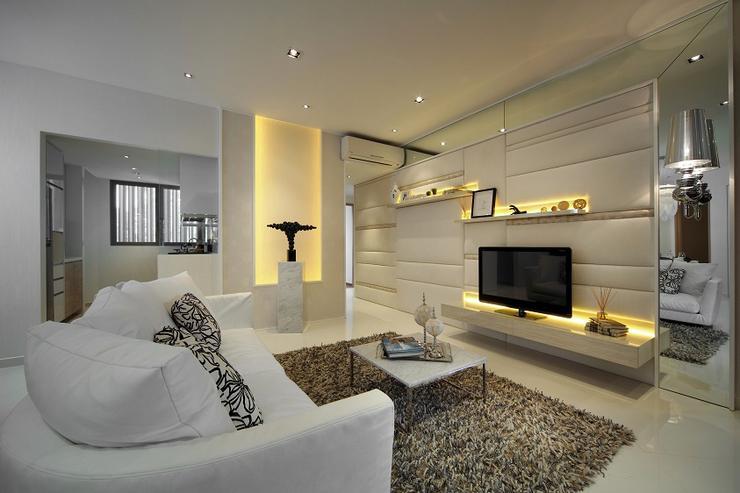The right type of lighting can make a huge difference in your HDB interior design. If you want to really bring out the desired look in your home, it is important to find a suitable type of lighting for your HDB. Strategically placed lighting can liven up your home and make it easier to see the different aspects of your HDB interior design. Conversely, a poorly lit HDB can seem dark and uninviting, as well as put strain on your eyes when doing activities such as reading or looking at a screen.
What Types of Lighting Are There?
When it comes to home lighting, there are three main types: ambient, task and accent. Any room requires a mix of these three types to create an effective lighting result. As you look at lighting for your HDB renovation, you may want to consider what type of effect you want the lighting to have on each of your HDB’s rooms.
Ambient Lighting
When you enter a dark room, what’s the first light switch you reach for? It is probably connected to the main ambient light in the room. Ambient lighting is what usually comes to mind when we think of lighting in general, placed there for the sole purpose of making a room brighter. They set the tone of the room, where the amount of ambient light can make a room feel brighter or dimmer. Typical ambient lights hang from the ceiling in the case of chandeliers and pot lights, but there are also other lights that can serve the purpose of ambient lighting, such as table lamps and floor lamps.
When you pick an ambient light, it is also important to consider the colour of your walls, since ambient lighting creates its best effect by bouncing off your walls to light up the room. Ambient light is usually the first type of lighting set up in HDB renovation, as it sets the precedent for other lights to follow.
Task Lighting
As its name suggests, task lighting does not aim to light up the whole room, but rather just one specific part for the task you are doing. For example, if you are up working late in a bedroom where other people are sleeping, you’ll probably keep the main lights off and just turn on one small light, such as a desk lamp, so you can see what you are doing. This desk lamp would be considered a task light because it is meant to provide light specifically for your table and nothing else. You may also find a light inside a cabinet or a wardrobe that helps you to see the objects inside, since the path of ambient light is usually blocked by your shadow.
Task lights come in different intensities depending on their purposes. Some people prefer brighter task lights, while others prefer dimmer ones. Either way, task lights should generally be bright enough to illuminate minute details without being too glaring on the eyes. They may actually be brighter than ambient lights, since task lights are focused while ambient lights are diffused. Some task lights come with a dimming functionality so that the light intensity can be adjusted according to each individual’s preference.
Accent Lighting
Unlike ambient and task lighting, accent lighting is less for making things brighter and more for creating effects or enhancing the style of the room. Generally, accent lights are any lights that mainly serve a decorative purpose. For instance, they are popularly used to add depth to a room, making it appear larger. Common accent lights are track lights and spotlights, which can be used to light up display cases, remove shadows from ambient lighting, or bring attention to décor. Accent lights are plentiful in art galleries and museums, where they are used to highlight exhibits on show, and even in some food stalls to enhance the appearance of dishes on display.
Choosing the Right Light
There are two key factors of every lightbulb: lumens and colour temperature. These factors control the brightness of each bulb and the feel it gives off.
Lumens
The brightness of a bulb is measured in lumens (lm), where a higher number of lumens corresponds to a brighter bulb. Generally, you would be looking for more lumens when choosing a task light as compared to an ambient or accent light.
Colour Temperature
The colour temperature of a bulb refers to the colour of light it emits, measured in Kelvins (K), where a higher number of Kelvins corresponds to a whiter colour. Most lights come in one of three shades: daylight, cool white, and warm white. For reference, sunlight is usually around 5,000K, while candlelight is around 2,000K. The most common colour temperatures you will come across when sourcing for home lighting are 5,600K and 3,200K, which are outdoor lighting and indoor (tungsten) lighting respectively.
